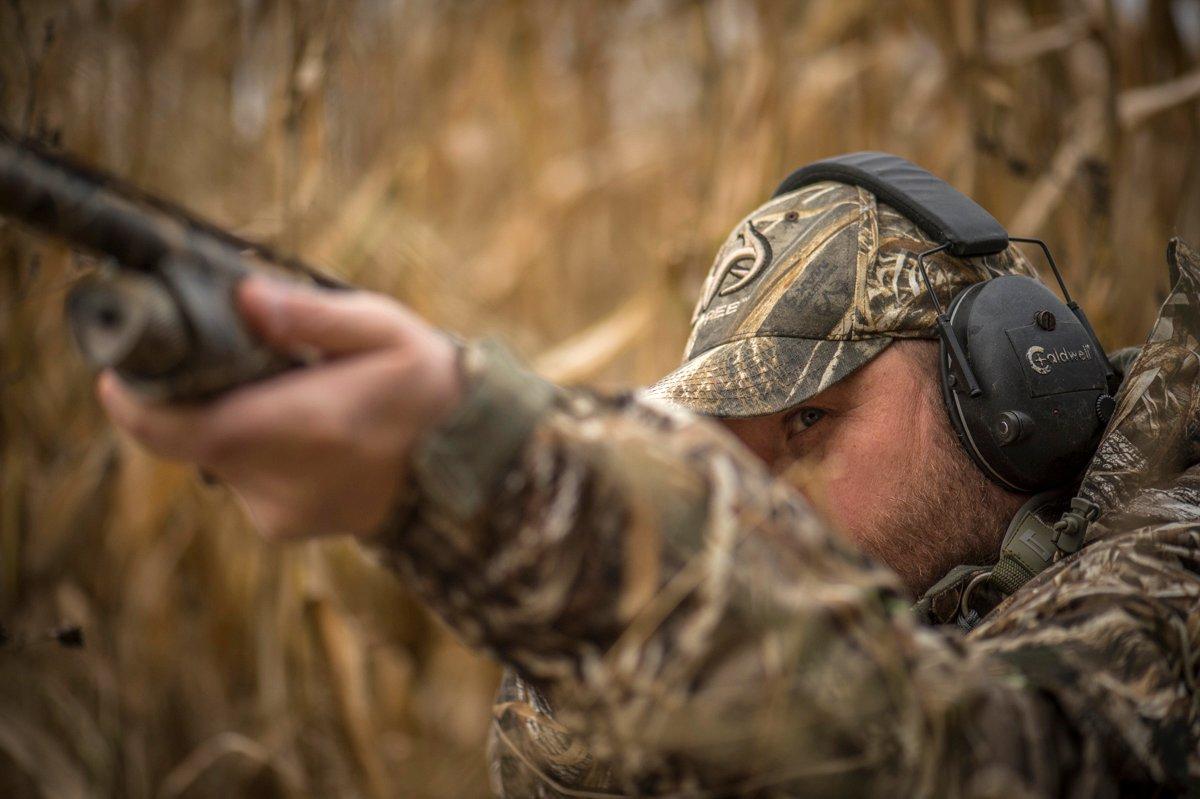Keep Your Eardrums Safe When the Shooting Begins
As an old joke says, the most common word spoken by a shooter is what?
But it's no joke. Without getting bogged down in science, we know that repeated exposure to the noise produced by gunfire causes hearing damage. And when you're in the high-volume shotgun shooting business — that's us, waterfowlers — your eardrums can suffer lots of pounding through the years, a season or even one hunt.
Common sense would dictate that duck and goose hunters should protect their ears any time they pick up a shotgun. And although almost everyone heeds that wisdom at the trap line or sporting-clays range, many of us ignore it in the marsh or goose pit. Why? Maybe because it's a hassle or wearing hearing protection doesn't seem cool, I guess. Yet I can tell you that suffering constant tinnitus (ringing in your ears) from repeated unprotected shooting and a careless muzzle blast from a friend is far from cool. In fact, it sucks. And although I steadfastly wear hearing protection when I hunt nowadays, the damage from yesteryear cannot be undone. I'm simply trying to preserve what I still possess.
Don't be like me. Protect your ears when you go afield. Here a brief look at some options.
Ear Plugs, Ear Muffs
Good ol' foam earplugs or their many variants do a decent job of protecting your ears, and they're easy to carry and use. The down side, of course, is that they block out all noise, including subtle clues upon which hunters rely, such as whistling wings or distant quacks or whistles.
I carry earplugs and use them in a pinch, but they're not my first choice. They're adequate for open-water hunting or other situations in which ambient noise isn't critical, but I'd never use them while goose hunting or in a timber situation. But they're better than nothing.
Likewise, standard ear muffs shield your eardrums from loud noises, but they also block out other noise. Further, older models are bulky and can be awkward to wear.
Electronic Muffs
Modern hearing-protection/enhancement muffs are marvels. Smaller, slicker and sleeker than their blocky predecessors, today's models cover your ears while letting you hear the sounds of the hunt without feeling like an astronaut's helmet atop your head. Electronic muffs are my first choice for most types of waterfowl hunting. Admittedly, they sometimes get in the way when I shoulder my gun or while wearing certain types of hats, but I love the freedom and security they provide.
Electronic Earplugs
These modern marvels protect and enhance your hearing while eliminating the bulk associated with muffs. You can find many options in this category at various price levels. Custom-fit models are especially appealing, as manufacturers can mold the inserts to fit your ears.
I've noticed a few cons with electronic plugs, though. First, battery life can be an issue. Second, I've used some models that did a good job enhancing hearing but didn't seem to muffle muzzle blasts as well as muffs or foam plugs. And maybe it's just me, but electronic plugs can be difficult to operate and insert when the wind is howling and your fingers are frozen.
Hear This
Bottom line: Find a mode of hearing protection you'll use. The best workout is one you'll actually do, and that holds true for your protecting your ears. Whether you go old school or high-tech, identify hearing protection that suits your needs and style of hunting, and then use it every time you go afield. Doing so might be a minor hassle, and you could be the only dude in the pit wearing protection. However, you will never regret preserving your hearing and enjoying the sounds of fall.
Click here for more Realtree waterfowl hunting content. And check us out on Facebook.








